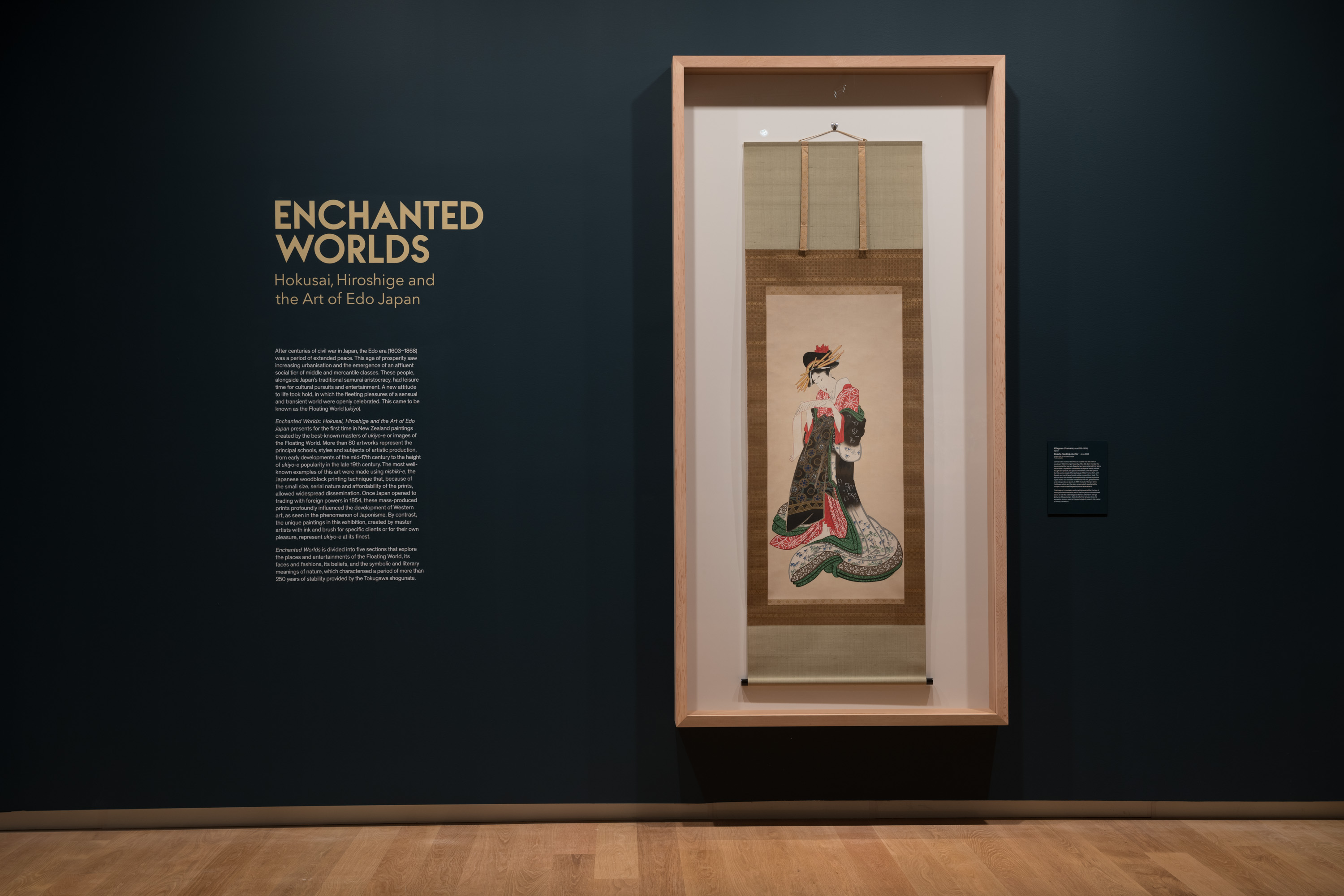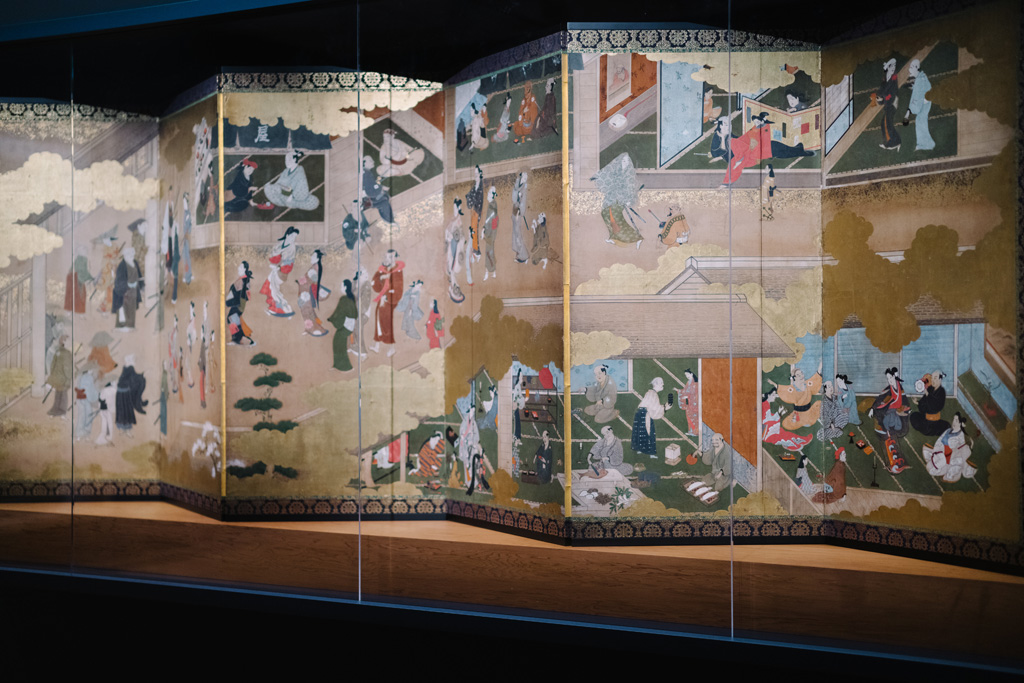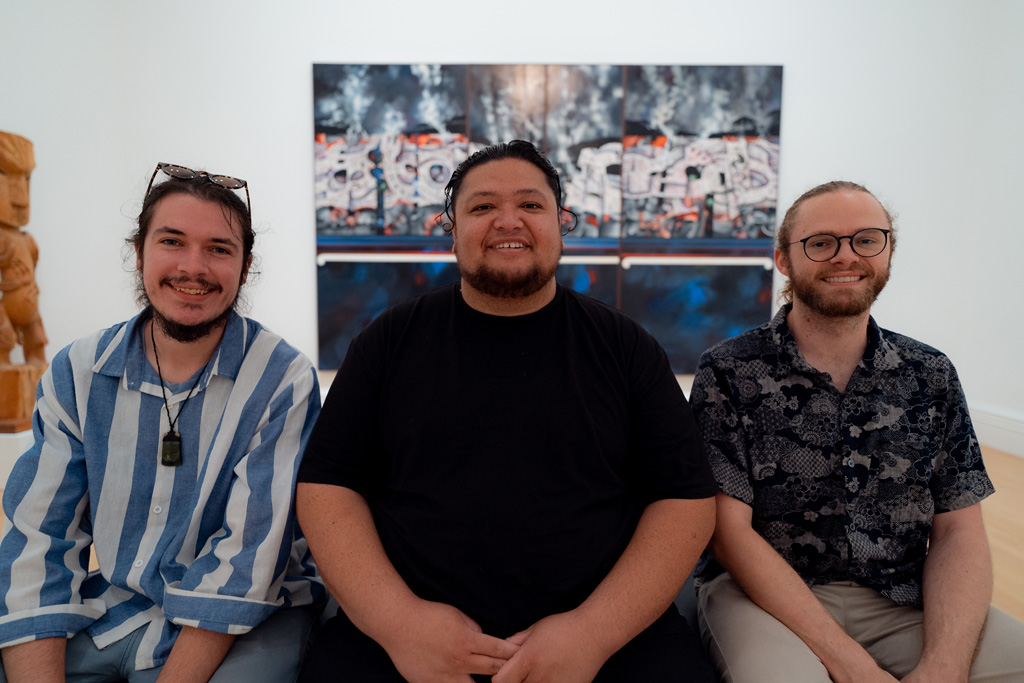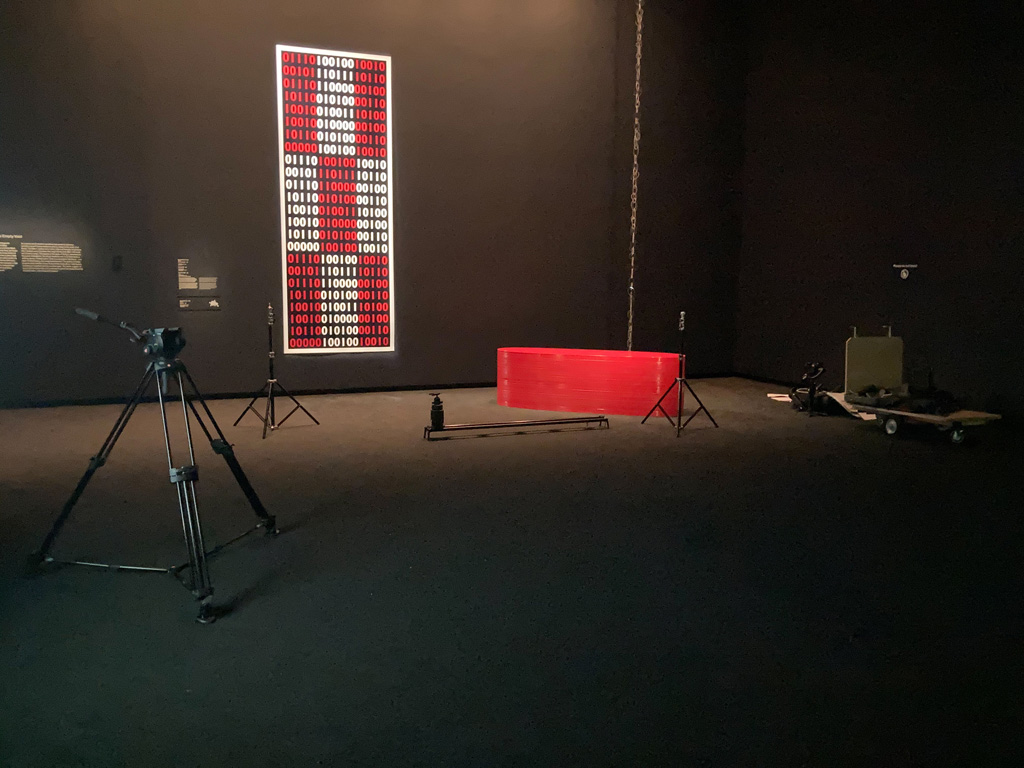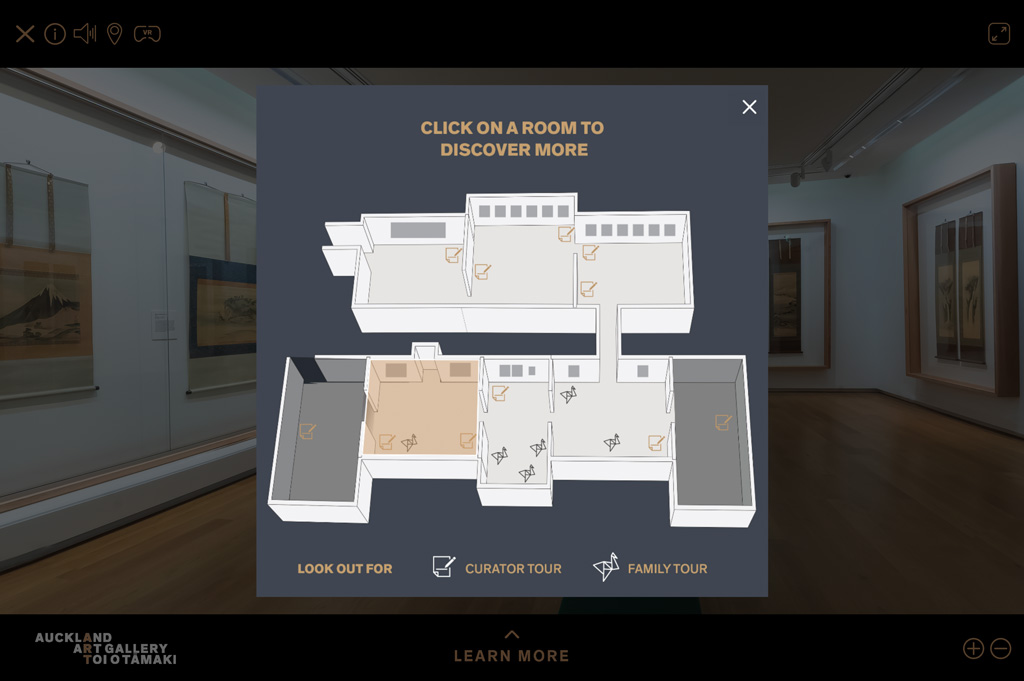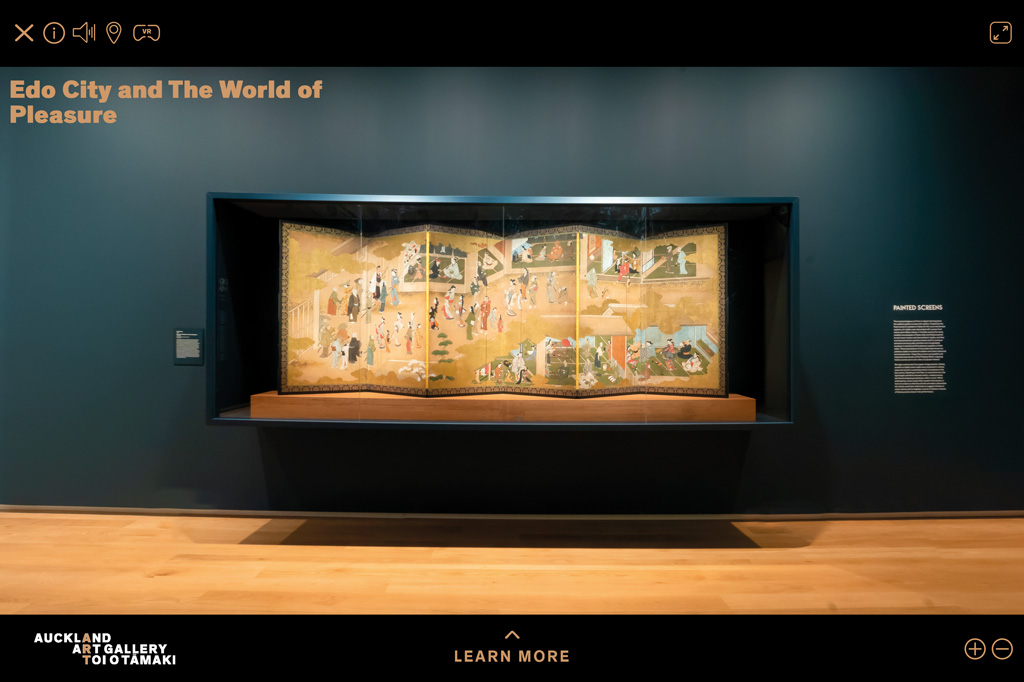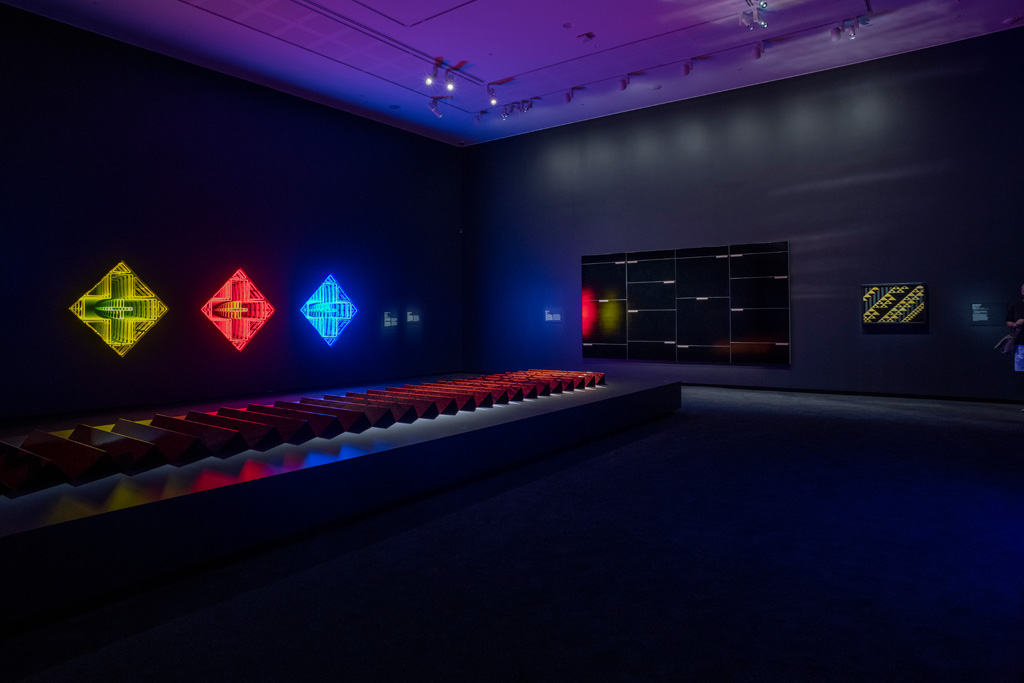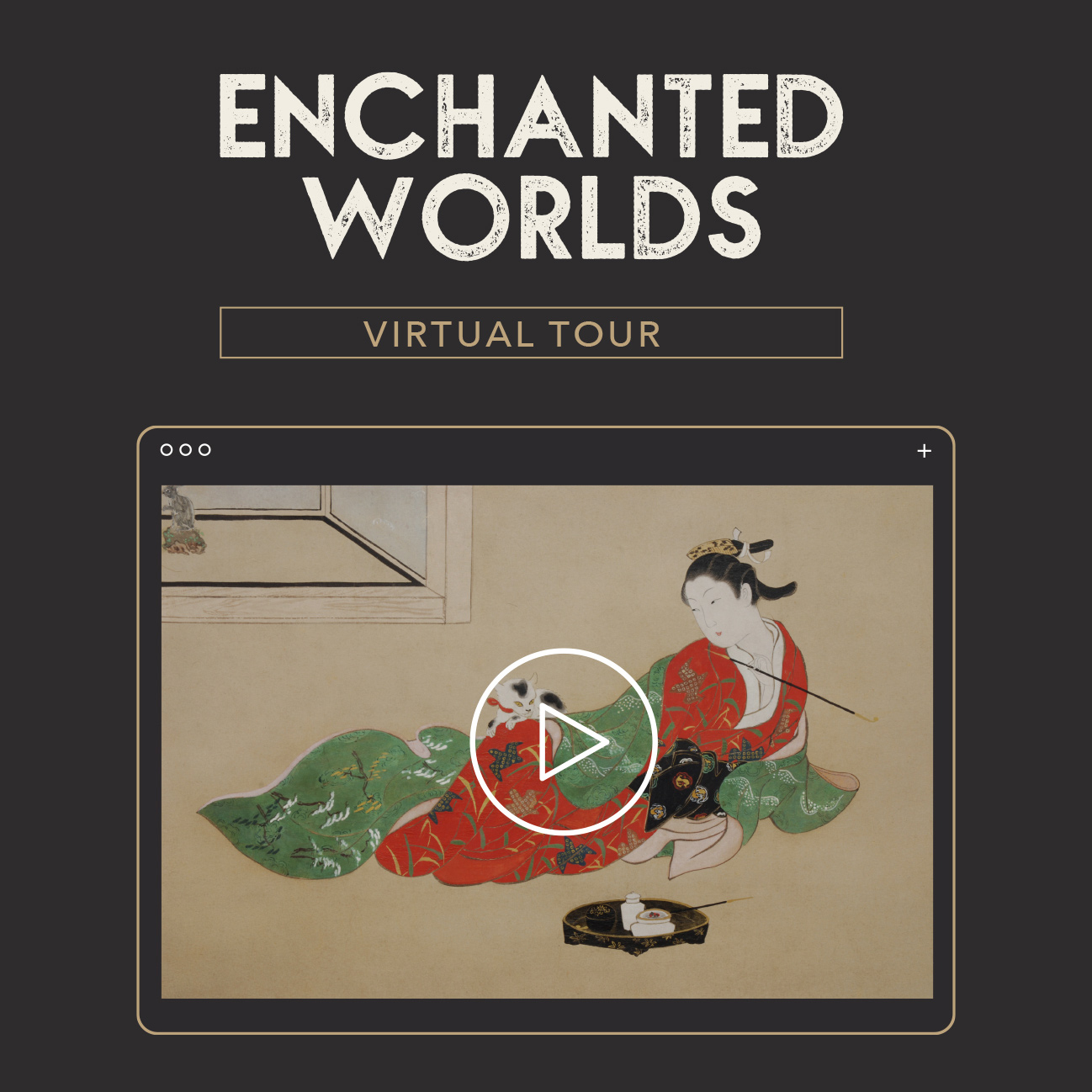This article appears in Art Toi Magazine, March 2021
Using panoramic photography, 360-degree video and virtual reality software the Gallery has been working on a project to digitise and bring to your screen Toi Tū Toi Ora: Contemporary Māori Art, the largest and one of the most significant exhibitions presented in our 133-year history.
Toi Tū Toi Ora includes the work of 111 artists and collectives, and with more than 300 artworks it spans 70 years of art-making from the 1950s to the present day. The exhibition almost entirely fills the Gallery, which is alive with visitors connecting with curator Nigel Borell’s vision of contemporary Māori art. This is not a typical survey show. Toi Tū Toi Ora uses a completely unique framework – it steps away from a Western chronological approach and brings te ao Māori to the fore through the Māori creation narrative. The opportunities for storytelling and learning that Toi Tū Toi Ora provides are extremely rich, nuanced and diverse, and this was the primary catalyst behind our digitisation project. Audiences around the world will be able to visit the exhibition and get up close via a virtual reality (VR) tour that concentrates on the narrative underpinning Borell’s curation. This project will also keep the core of the exhibition alive as an experience long after the artworks have come down.
Surprisingly, given our digital-infused lives, experiencing art online is still uncommon. However, throughout the global Covid-19 pandemic digital exhibitions began to take centre stage, with many museums and galleries reporting large increases in the number of people visiting their websites. Catering for this has been a costly adjustment for many institutions, but it has arguably made art more accessible than ever before. One example is the Louvre’s, Mona Lisa: Beyond the Glass exhibition, which used VR and digital platforms to allow remote fans a close-up view of the world’s most famous painting and to explore it in astonishing detail. Through VR, viewers could spend as long as they liked in the company of Mona, when in real life you join a crush of tourists with their extended iPhones for a time-limited viewing.
The Metropolitan Museum of Art recently launched The Met Unframed, a series of virtual art and gaming experiences based on their collections, which provided free digital and augmented-reality access to the museum’s many masterpieces. And the Natural History Museum in London utilises the Google Arts and Culture platform to offer several virtual tours, including an immersive augmented-reality exploration of the blue whale, and a virtual journey through the museum’s entry hall narrated by Sir David Attenborough. In New Zealand, VR technology in the arts and culture sector has not been widely implemented – it’s more commonly used in real estate marketing.
Two weeks before the country went into lockdown in March 2020, the Gallery opened a major ticketed exhibition of historic art: Enchanted Worlds: Hokusai, Hiroshige and the Art of Edo Japan. We quickly needed to develop an alternate way to deliver the exhibition to our audiences. The resultant online experience at virtual.aucklandartgallery.com was the Gallery’s Covid-19 crisis response and became the first in a planned series of virtual exhibitions built off a new digital platform.
